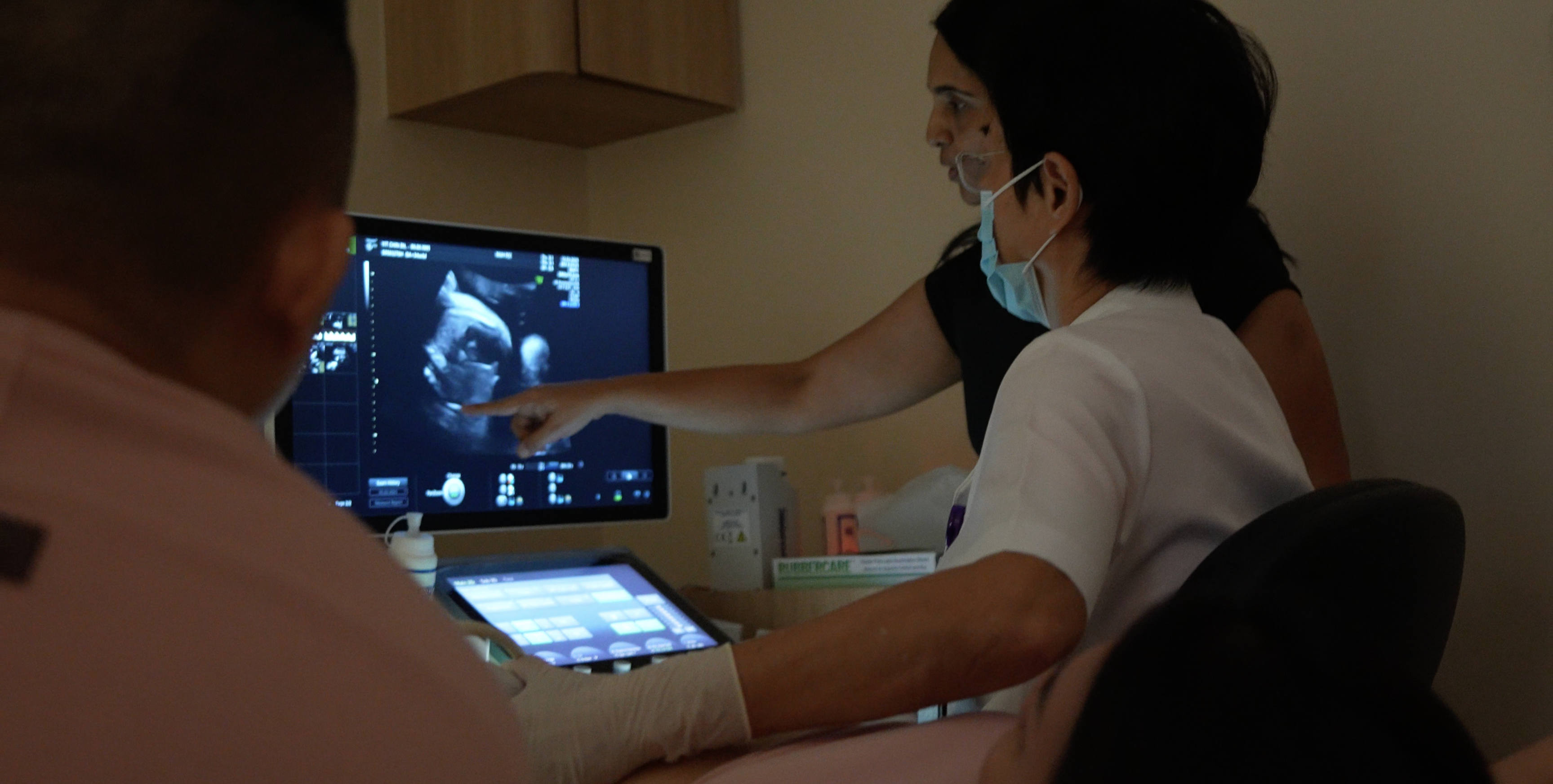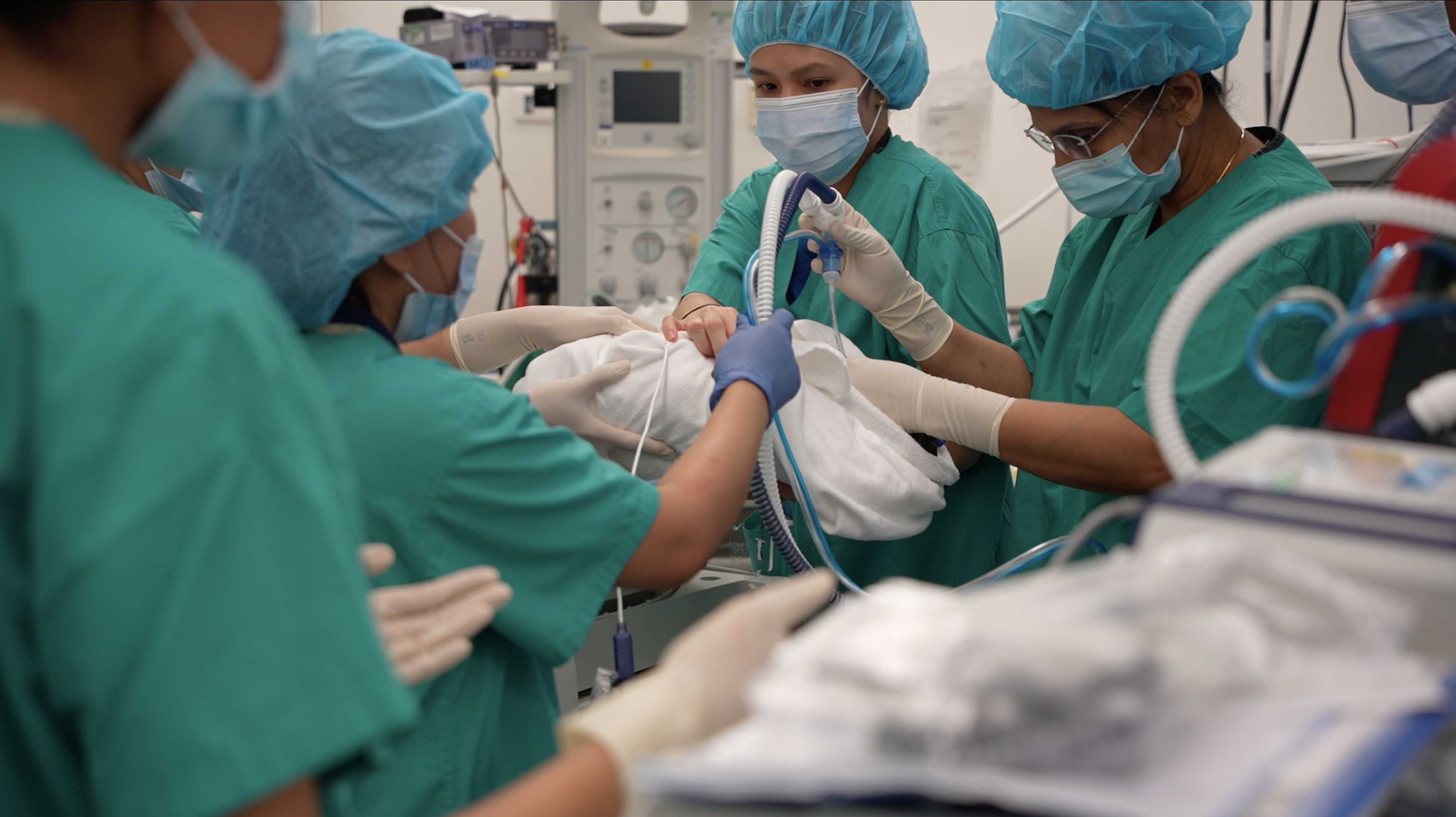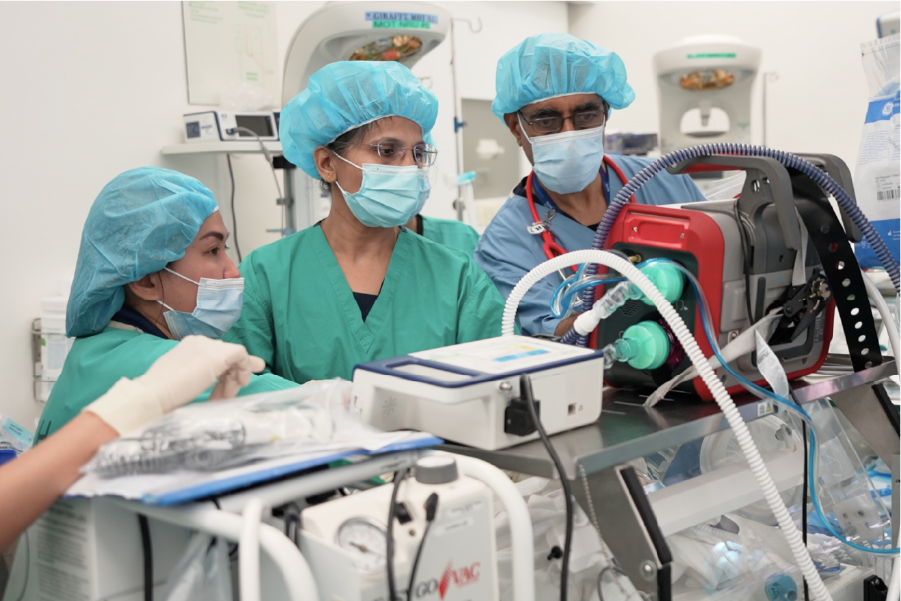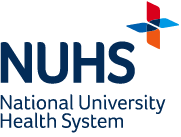 Subscribe and ensure you don't miss the next issue!
Subscribe and ensure you don't miss the next issue!
Every pregnancy carries a degree of uncertainty. But for some expectant parents, this uncertainty takes on some clinical significance, requiring expert care that involves early diagnosis, careful planning and the close coordination of multidisciplinary teams.
At the National University Hospital (NUH), multidisciplinary teams work closely to support expectant parents through complex pregnancies, with the goal of giving every baby the best possible chance at life, even before birth.
Navigating a diagnosis before birth
During her 20-week scan, Ms Yit Chin En and her husband, Mr Dui Kar Wuai, received unexpected news that their baby had a congenital diaphragmatic hernia (CDH) — a rare developmental condition that occurs when the diaphragm does not form properly, which causes abdominal organs to shift into the chest cavity and crowd the lungs and heart. This can severely impact lung development and cardiac function.
“It was a diagnosis we’d never heard of,” says Mr Dui. “At first, we didn’t even know what to ask. All we felt was fear, and guilt.”
The couple was immediately referred to NUH’s high-risk pregnancy team, where the diagnosis was confirmed and the condition assessed as moderate. While CDH occurs in approximately one in 2,500 to 3,500 births, each case varies in severity depending on lung volume and how much the heart is displaced.
From that point on, Ms Yit’s pregnancy was closely monitored by the Department of Obstetrics & Gynaecology1. Every two weeks, she underwent ultrasound scans to assess foetal growth, lung development and the lung-to-head ratio — a key indicator of how well the baby’s lungs were forming.

A coordinated team of specialists supported the family through the process. At the high risk clinic, appointments were structured to allow time for in-depth discussions with the clinical team right after ultrasound scans.
“We arranged extended sessions so we could review the ultrasound findings with the parents, explain what they meant, and, where appropriate, refer them to other key specialties — in this case, neonatology and paediatric surgery,” says Dr Anita Kale, Senior Consultant, Division of Maternal Fetal Medicine, Department of Obstetrics & Gynaecology1, NUH.
At the same time, the team remained attentive to the mother’s overall health and emotional needs. “It was an understandably difficult time. Beyond medical care, our role was also to support the mother’s wellbeing and provide clarity throughout the couple’s journey,” Dr Kale adds.
Coordinated care from delivery to recovery
At 38 weeks, baby Darius was delivered at NUH with teams from obstetrics, neonatology and paediatric surgery on standby. The moment he was born, he was intubated and placed on assisted ventilation.
“For babies with CDH, even standard measures like bag-mask ventilation can be risky as it can inflate the stomach and intestines, which are already crowding the chest cavity,” explains Adjunct Associate Professor Krishnamoorthy Niduvaje, Senior Consultant from the Department of Neonatology, Khoo Teck Puat — National University Children's Medical Institute (KTP-NUCMI)1, NUH. “Instead, we immediately insert a breathing tube and place a gastric tube to decompress the stomach.”

Darius was then transferred to the Neonatal Intensive Care Unit (NICU), where the team optimised his oxygenation while protecting his only functional lung. “Babies with CDH are born with smaller lungs and abnormal blood vessels. This combination of lung hypoplasia and pulmonary hypertension makes respiratory management very sensitive. Our goal is to provide just enough support to maintain oxygen levels, but not so much that we damage the lung,” adds Adj A/Prof Niduvaje. Inhaled nitric oxide and continuous monitoring helped the team stabilise Darius by day five, making him well enough for surgery.
Darius then underwent corrective surgery led by the Department of Paediatric Surgery. “Every baby with CDH will need surgery, but the timing depends on how stable their breathing is. For Darius, thanks to the excellent work carried out by our neonatology colleagues, he was in good condition to proceed,” says Adjunct Associate Professor Vidyadhar Mali, Head & Senior Consultant, Department of Paediatric Surgery, KTP-NUCMI1, NUH.
The goal of the surgery was to reposition the displaced organs from the chest back into the abdomen, and to close the defect in the diaphragm to allow lung growth and function over time.
However, the defect in Darius’s diaphragm turned out to be larger than usual. “Fortunately, there was sufficient muscle available to allow us to do a primary repair, without the need for a patch. This makes a difference as it supports better diaphragmatic function and often leads to a quicker respiratory recovery,” adds Adj A/Prof Mali, who also serves as Surgical Director & Senior Consultant for Paediatric Kidney and Liver Transplantation Programmes at the National University Centre for Organ Transplantation, NUH. Darius recovered smoothly from surgery, with no major complications.
He spent 24 days in NICU, gradually weaning off respiratory support and beginning milk feeds. With close monitoring and family involvement in his care, he continued to meet key recovery milestones. Today, Darius is home but he will continue to attend follow-ups with NUH’s multidisciplinary teams to monitor his growth and lung function. But for now, the family is focused on the present.
1The Department of O&G and KTP-NUCMI are part of the National University Centre for Women and Children (NUWoC), a national university specialist centre that aims to empower women, children and their families to lead healthier lives.
Like this article? Simply subscribe to make sure you don't miss the next issue of EnvisioningHealth!






















